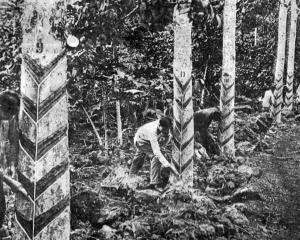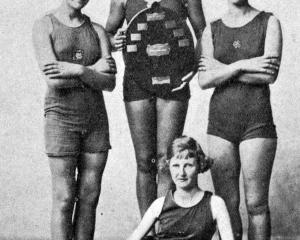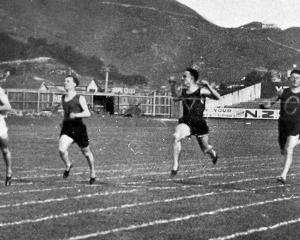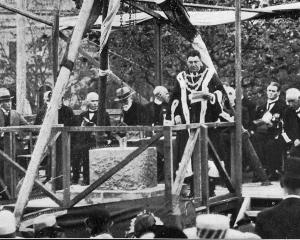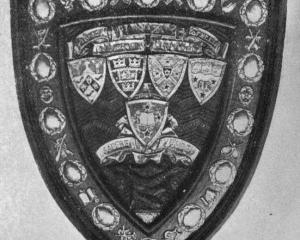The Germans state that they sighted three British ships at 6 o'clock in the evening, and forced an engagement.
Directly the German guns were trained they saw the Good Hope approaching at full speed, and by good seamanship she joined the other British vessels.
The two squadrons made for the south, the Germans being nearer the coast.
They gradually approached each other, and the Germans' first shot fell short.
When the two squadrons were 6000 yards apart the Good Hope fired her 9in guns, but a broadside from the Scharnhorst and Gneisenan crippled the Good Hope, and her engines stopped.
The Monmouth made a dash to cover her, but the distance between the squadrons being reduced to 5000 yards the Germans were able to bring all their ships into action, and concentrated their fire on the Monmouth until she sank.
The ships were now 4500 yards apart.
The Good Hope hung on until there was an explosion, when she withdrew to the westward at 7.30 p.m.
Flames were seen coming from her as she disappeared.
The Nurnberg searched for the victims until daybreak, but was unable to launch her boats in the gale.
Von Spec, commander of the German squadron, states that the fight near Santa Maria lasted for an hour in the dark.
He adds that the Good Hope fled, but an explosion was seen between her funnels.
He supposed that the Glasgow suffered small damage. She escaped in the darkness.
It was impossible to assist the Monmouth's crew owing to the storm. While sinking the Monmouth tried to ram one of the German ships.
• An interesting innovation in Sunday school methods was established in the St. Kilda Methodist Sunday School yesterday.
Both the minister (the Rev. A. J. Seamer) and the Sunday school superintendent (Mr W. T. O. Kaye) are enthusiasts in educational lantern work, and Mr Kaye has decided to use an electric projecting lantern in a 15-minutes' review of the lesson each Sunday afternoon.
The slides will comprise diagrams, views, and sacred art pictures, etc., and many will be specially made by Mr Kaye for his lesson reviews week by week.
Yesterday, being Temperance Sunday, a special opportunity was presented for the introduction of the new method, which was a pronounced success.
Bible land views, sacred pictures, and temperance and other diagrams were most effectively used, and the definition was perfect, in spite of the fact that the windows were only semi-darkened, and there was light enough to see the expression on the face of every child.
Thus it was easy to teach effectively and keep perfect control of the large school during the review.
There seems every prospect of the establishment in other schools of the same method of reviewing the lesson after class with the aid of the lantern, for those present yesterday to see the innovation tested were more than satisfied with the result.
Expert knowledge of slide-making and lantern operating is, however, not in general, an accomplishment of Sunday school superintendents, and the St. Kilda Methodist School is to be congratulated upon having the devotion and enthusiasm of Mr W. T. O. Kaye in this work. - ODT, 9.11.1914.
• COPIES OF PICTURE AVAILABLE FROM ODT FRONT OFFICE, LOWER STUART ST, OR WWW.OTAGOIMAGES.CO.NZ

